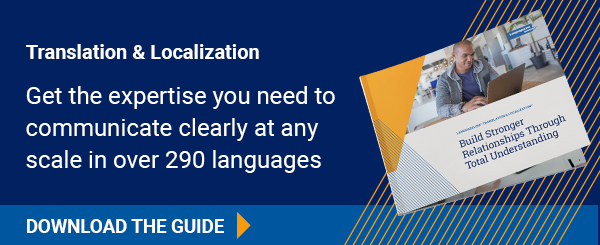
A special-education student named Javier is enrolling in a new school district. After being evaluated and accepted into the district’s special-education program, the Individualized Education Program (IEP) team has 30 days to create a year-long academic plan for him. They must then schedule time with Javier’s parents to discuss the plan and make sure they agree to it.
This may be a very straightforward procedure for families that speak fluent English. It can be quite daunting, however, for Javier’s family, which is limited English proficient (LEP). This means they do not speak English as their primary language and have a limited ability to read, speak, write, or understand the language. Families like Javier’s may be entitled to language assistance by law.
To create engagement, the school district must translate Javier’s IEP and reports. It must also use interpreters to communicate with Javier and his family during spoken conversations.
Not only is this the right thing to do, it’s also the law. Once a child qualifies for special education, the IEP must be developed and shared with parents or legal guardians within 30 days. Title VI of the Civil Rights Act of 1964 says that schools must provide these documents in the parents’ preferred language. Furthermore, a qualified interpreter must be present for meetings with the LEP student and family.
Any school district that receives federal funds is subject to these laws. Schools are considered out of compliance if they fail to provide language access.
This process can be overwhelming for a school with hundreds – if not thousands – of students to look after. Also, schools have access to limited funds, meaning cost is a huge consideration.
Addressing the Challenge of IEP Translation
Administering an IEP under any circumstance requires tremendous attention to detail. Adding translation and interpretation into the mix increases the workload and can be one reason that schools fall short of their federal requirements.
There Is a Solution
Language services providers (LSPs) like LanguageLine® are accustomed to working with schools on the translation of IEPs. This service is typically cost-effective and well within a school’s budget. Furthermore, we frequently provide affordable, live interpretation for parent-teacher meetings. By partnering with an LSP, schools can make sure that their IEP materials are translated frequently. This ensures that parents remain engaged with their children’s education, as well as that the school district remains compliant with the law.
Making a Plan
As we said earlier, time and cost are primary considerations for schools. The first step in working with schools is creating a workflow plan that is simple and creates maximum efficiency. This does two things: it saves the school money, and it also allows staff to focus on what it does best, thereby increasing productivity.
This workflow plan would likely consist of three components: translation, interpretation, and the handling of inbound calls.
- Translation of the written word: LanguageLine Machine Translation with human post-editing (MTPE) is a great option for translating IEPs. This technology can help schools save money and time with a process that maintains quality while also being faster and more cost-effective. Schools will have their own glossaries and translation memories, which helps maintain the consistency and quality of the translations, in addition to reducing costs through use of repeat text. This translation is available in more than 380 languages.
- Interpretation of the spoken word: LanguageLine provides on-demand access to more than 20,000 interpreters in more than 240 languages. This interpretation comes in two forms: on-demand and on-site. On-demand allows schools to enjoy one-touch interpreting via mobile, video, and phone in just seconds. For those instances in which there is no substitute for having an interpreter physically there, LanguageLine OnSiteSM interpreters can come to schools to assist with the most nuanced of conversations.
- Inbound calls: LEP students and their families may have questions about their IEPs. When they call the school, is staff prepared to assist with inbound calls in a non-English language? LanguageLine DirectResponseSM creates an in-language experience for limited English callers where the interpreter’s voice is the first live one they hear.
Getting started
Interested in using our language access services for IEPs? Existing LanguageLine clients should contact their account representative. If you are not a current client, you may reach out to us via our website or by calling (800) 752-6096.

